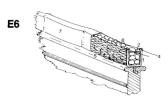Captain Murphy
Actually a Captain
TOP CONTRIBUTOR
Programmer
Public Relations
Hearts of Oak Donator
Pirate Legend
A lot of the wheel equipped ships I worked on had a limiter that kept the wheel at the position of the rudder so if you stopped turning the wheel the rudder stopped right where it was, but the 'stick' driven ones allowed you to set the order position to any point and the indicator would try to match that ordered position. It was a lot easier maneuvering the vessel that way since you could just flip the stick to one side or the other and start powering engines or thrusters while it was running the rudder to catch up. Only one of the stick systems had an indicator to show the ordered position, but it was all digital, the others were usually an analog gauge with the current rudder and the stick was the ordered angle.I'm afraid I cannot quite picture the difference, so I cannot really provide feedback on that.
Would it be possible for you to make a mock-up of the options? A simple Paint sketch would probably work.
Rudder angle indicators are VERY useful when the ship is equipped with a steering wheel!
That is VERY cool! That's more than actual modern ships have though.
They mostly just have a read-out of the actual angle; not the ordered one.
The reason we went with 'ordered' and 'responded' was (mostly) because of 'hard over' and midships commands. You can order a hard over and the ordered indicator will snap to the end of the scale, the responded shows the crew trying to respond to that order and the second indicator will 'chase' the order. As crew is depleted or fatigued the orders will get followed more slowly, so we wanted to show where the rudder was at any time versus where the order is needing it to be. Also, larger ships will take a bit longer for rudders to move, so we wanted to show that to the player instead of making them guess why they were hard over but not actually turning yet.


















